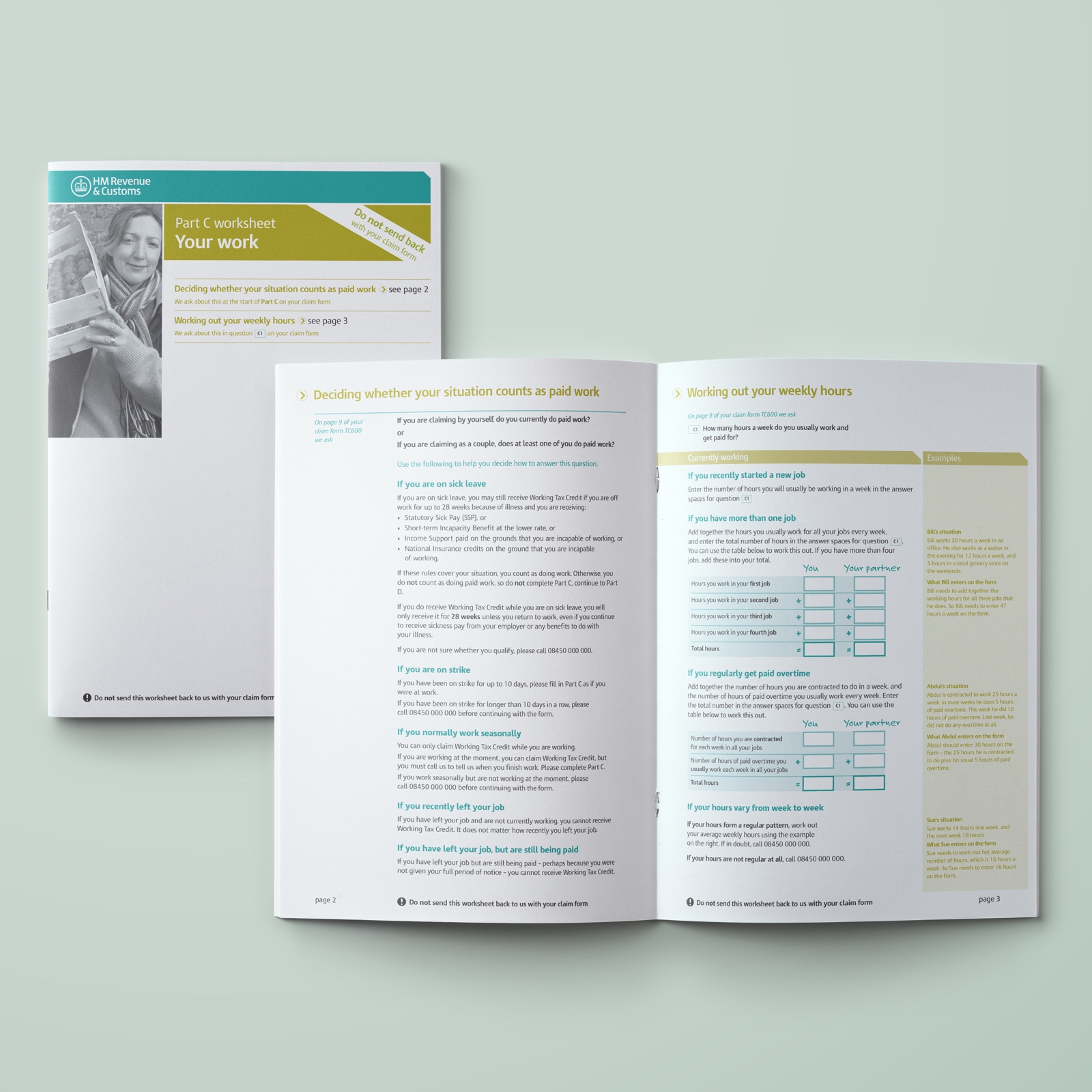The UK Government’s HMRC (the UK’s equivalent to IRS) has to communicate very complex information to the broadest public audience, among whom levels of functional literacy—applied reading and writing skills needed in daily life and work, such as completing forms—can be challenging.
Our team’s high-level strategy for customer communications included the reorganization of communications functions, a review of standards and guidelines, creation of a key message hierarchy, and demonstration of a new customer-focused approach to communications.
In the most significant phase of the project, I led on design (and served as co-writer) in an overhaul of the UK Tax Credits form. A mechanism to redistribute income to people on lower wages, the policy’s efficacy was held up by the original form, which had a 90% error rate—9 in 10 first-attempt applications were inadmissable due to errors made filling the form, leaving millions of UK families struggling financially despite their eligibility for assistance.
Our redesign slashed the error rate by two-thirds, as reflected by quantitative testing pitting original vs new forms. Our design solutions influenced subsequent UK Government communications used by tens of millions of people. And by 2013 the number of children living in families below the poverty line had fallen by almost half since the introduction of tax credits in 1999.



